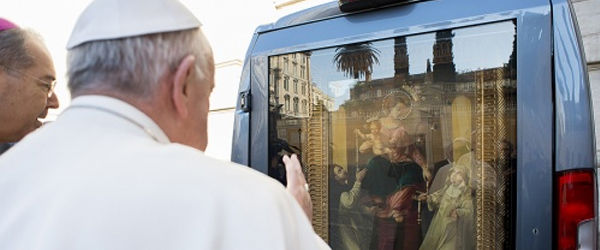California’s new budget which took effect July 1 contains steep social service cuts, including the controversial elimination of two programs helping the poor: Healthy Families and the private school portion of the state child nutrition subsidies.The $91.3-billion general fund spending plan — designed to close a $15.7-billion deficit with a combination of cuts that includes reductions to health and welfare programs and furloughs to state workers — also relies on voters passing a tax initiative on the November ballot temporarily raising taxes on sales and wealthy individuals. According to Gov. Jerry Brown, if voters do not approve the $8 billion in temporary tax hikes, the state’s public schools will face billions in budget cuts. He acknowledged in a written statement that the budget he signed last week reflects “tough choices” taken to get California back on track. Catholic leaders have voiced particular concern about the budget’s elimination of the Healthy Families program, shifting 900,000 poor children to Medi-Cal, as well as the termination (through the governor’s line-item veto) of state child nutrition subsidies to private schools, including 68 Catholic schools in the archdiocese participating in the National School Lunch and Breakfast programs. “While it looks cost effective in the short-term and possibly in the intermediate reality, in both the short term and the longer term, fewer of the children currently on Healthy Families will have access to doctors since more doctors prefer Healthy Families rather than Medi-Cal,” said Ned Dolejsi, executive director of the bishops’ California Catholic Conference.The California Association of Private School Organizations questions the fairness of singling out private schools for the elimination of state child nutrition subsidies and keeping state reimbursements for students in public schools.The budget also includes $1 billion in cuts from Medi-Cal and other health programs. Some of that savings comes from a plan to move 1.4 million seniors and disabled from Medicare and Medi-Cal into managed care, according to a recent L.A. Times article. An estimated 14,000 children have been eliminated from state-subsidized child care, casualties of one of the governor’s line-item vetoes.“Sadly, those who are poor and the working poor continue to be disproportionately impacted by the severity of the budget cuts,” said Auxiliary Bishop Gerald Wilkerson, president of the CCC. “Our Catholic Charities and Catholic Health Care organizations who work daily with our neighbors in need will assess the impact on our people, and will raise their voices on behalf of the needy.”Dolejsi noted CCC’s dismay over Gov. Brown’s veto of the $10 million funding state nutrition supplements to private school children, including 13,182 students in the archdiocese who qualify to participate in the free or reduced price lunch and breakfast programs which have been largely subsidized by federal and state reimbursements. “The governor appears to be under the misconception that it’s a subsidy for private schools — in reality, it’s a supplemental pass-through of state funds,” said Dolejsi.The Van Nuys-based California Association of Private School Organizations questions the fairness of singling out private schools for the elimination of state child nutrition subsidies and keeping state reimbursements for students in public schools.“Fairness aside, the proposal is likely to be fiscally counterproductive,” said the organization. CAPSO points out that the state saves at least $7,600 per year, or $42.22 per day per pupil enrolled in private school. If a private school student receives both a subsidized breakfast and lunch on each of 180 annual days of school, the state is currently spending a total of $56.23 per-pupil, per year.According to CAPSO, if as few as one out of 136 students currently enrolled in a private school decides to transfer to a public school because he/she can no longer receive nutritious meals at school, the expense incurred by the state will outweigh the proposed savings generated by the elimination of the state subsidy.“The private school community recognizes that California faces difficult economic challenges,” said CAPSO in a written statement. “We are prepared to shoulder our fair share of the burden. We only suggest that the proposed reduction be distributed among all recipients of the benefit. In this way, the net reduction to each recipient would be minimal.”

